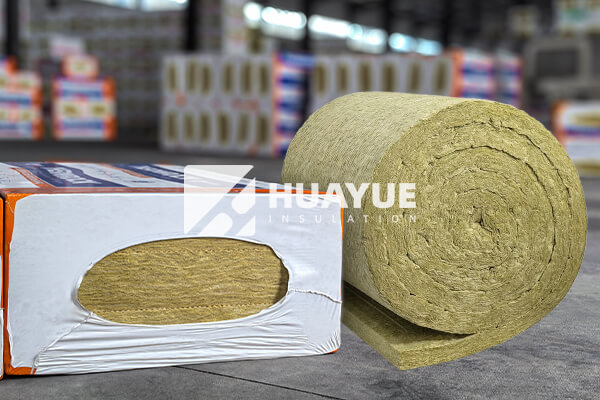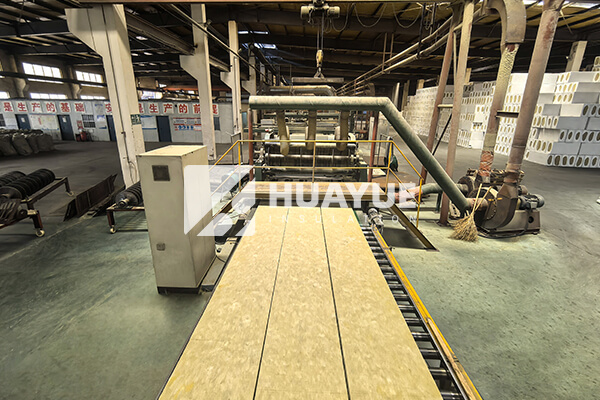Rock wool insulation price per square foot: What should you expect to pay?
Skyrocketing construction costs having you worried about your next project? You might be wondering just how much you need to budget for rock wool insulation, and whether its benefits justify the cost.
Rock wool insulation typically costs between $1.20 and $2.00 per square foot, depending on thickness, density, and market conditions. This insulation provides excellent thermal and fire resistance while keeping long-term maintenance costs low.

Many of my customers want to understand the cost breakdown before making any decision. The price of rock wool insulation often appears confusing at first. It can also vary a lot, depending on suppliers, specifications, and order size. I have run into this question so many times, both from new customers and experienced engineers. Let’s go step by step, so you can make an informed choice and avoid costly mistakes.
How much does Rock wool insulation cost?
It is easy to worry about a high up-front price. But understanding the full range will help you avoid overspending on your project.
You can expect rock wool insulation to cost anywhere between $1.20 and $2.00 per square foot for standard thicknesses. Prices may fluctuate due to factors like local market supply, order volume, and technical grade.

The price varies according to the thickness and density you need for your application. If you only need a thin, basic layer for walls or interior partitions, you will stay close to the lower end of the cost range. If you need heavy-duty insulation, such as for industrial tanks or cryogenic pipelines, you may want to select thicker and denser panels, which will be more expensive per square foot.
Here is a quick look at how thickness impacts price:
| Thickness | Typical Application | Price Range ($/sqft) |
|---|---|---|
| 1” (25mm) | Residential & Light Comm. | $1.20 – $1.40 |
| 2” (50mm) | Commercial & Industrial | $1.45 – $1.70 |
| 3” (75mm) | Heavy Industrial | $1.70 – $2.00+ |
Prices will also be affected by certifications, fire ratings, and extra coatings. You should always make sure to compare specifications, not just prices.
What is the lifespan of Rockwool insulation?
Many people only focus on the initial cost, but the real value of an insulation material lies in how many years it will last.
Rockwool insulation can last over 30 years if properly installed and protected from direct water exposure. Its inorganic structure resists decay, pests, and fire, making it one of the most durable options.

I remember visiting a facility which used the same rock wool insulation panels for three decades with little sign of breakdown. Unlike organic materials like some foams or fiberglass, rock wool does not rot. It does not host mold or attract insects. You will not see the fibers break down or settle over time. This is vital, especially for critical uses such as tank insulation in chemical plants or energy systems.
However, the key is always installation. If there is a gap, or if water seeps in and sits inside the insulation, the service life can be compromised. Routine checks and a well-designed cladding system stop these issues before they start.
Here is a simple table comparing lifespan between common insulation materials:
| Insulation Type | Typical Lifespan | Comments |
|---|---|---|
| Rock Wool | 30+ years | Inorganic, highly durable |
| Fiberglass | 15-20 years | Prone to mold and settling |
| Polyurethane Foam | 20-25 years | Can degrade under UV/expose |
| EPS Foam | 20-30 years | Vulnerable to solvents |
This chart shows why so many engineers still choose rock wool after all these years.
What’s better than Rockwool?
With better options always emerging, I often hear people feeling uncertain about whether rock wool is truly the best fit.
Few materials match rock wool’s full package of fire, thermal, and sound insulation, but for lower thermal conductivity and water absorption, closed-cell foam glass may be better in some harsh environments.
At HUAYUE, I frequently advise engineers choosing insulation for chemical or cryogenic tanks. Rock wool wins on many points: it can take high temperatures, resists fire, and it is cost efficient for large surfaces. However, foam glass insulation is truly closed-cell. That means it absorbs almost no moisture at all. Its compressive strength can be superior. In some chemical environments, foam glass resists the most aggressive corrosion.
Here is a quick comparison table:
| Property | Rock Wool | Foam Glass |
|---|---|---|
| Fire Resistance | Excellent | Excellent |
| Water Absorption | Low | Almost Zero |
| Thermal Conductivity | 0.035-0.045 W/mK | 0.035-0.040 W/mK |
| Mechanical Strength | Good | Excellent |
| Price ($/sqft) | $1.20-$2.00 | $2.00-$3.00+ |
So if you need absolute moisture resistance and mechanical stability, and the higher price is not a concern, foam glass might be a stronger candidate.
Does Rockwool require a vapor barrier?
This may seem confusing, but it’s one of the most common questions, especially for cold and cryogenic systems.
Rock wool insulation usually requires a vapor barrier when used on cold pipes, tanks, or where there’s a risk of condensation. For walls or ceilings in most buildings, a vapor barrier is not always necessary.
A vapor barrier’s purpose is to stop warm, humid air from getting inside the insulation, where it cools and forms liquid water. For example, in tanks containing liquid ammonia or LNG, a high-quality vapor barrier is non-negotiable. But for standard exterior wall applications in moderate climates, vapor control may already be built into the cladding or wall system.
In projects I’ve advised, skipping a vapor barrier in the wrong environment has caused CUI, insulation breakdown, and costly repairs. Always check standards for your specific climate, system temperature, and humidity.
Benefits of Rock Wool Insulation
With so many options, the real value of rock wool sometimes gets lost in the details.
Rock wool insulation provides high fire resistance, good sound absorption, long-lasting thermal performance, and is non-combustible. It’s also resistant to mold, pests, and does not easily lose thickness or shape over time.
From my experience, I have seen how rock wool outperforms traditional materials in fire safety. In large tank farms, fire risk is always on everyone’s mind. Rock wool keeps its structure even after many hours of direct flame. It will not drip, burn, or release toxic fumes. You can process and cut it to the needed shape on site, which is valuable on fast-moving projects.
Here’s a summary of rock wool’s main benefits in a compact table:
| Feature | Benefit |
|---|---|
| Fire Safety | Withstands up to 1000°C |
| Sound Absorption | Reduces noise pollution |
| Pest Proof | Inorganic, discourages infestations |
| Dimensional | Does not settle or sag |
| Water Repellent | Minimal absorbency if properly clad |
All these help save maintenance costs, extend service life, and add peace of mind for safety. This is why rock wool remains so trusted after decades.
Conclusion
Rock wool insulation commands a fair price thanks to its fire safety, durability, and value over decades, making it a top choice for a wide range of industrial and building projects.
You may also be interested in:
Ready to Get Started?
Get in touch with our experts for personalized solutions tailored to your needs.
Get Free QuoteLatest Articles

Fiberglass Insulation Roll - What’s Inside the Roll?
Dec 22, 2025
Let's Work Together
Ready to take your business to the next level? Get in touch with our team of experts and let's discuss how we can help you achieve your goals.
Get Free Solutions






